|
1) Do acknowledge them Hello. Talk to them when they come in. Show some interest. Get to know them. 2) Do show respect Grow up. Kids want to be treated like an adult, this is one area in which that works. 3) Do provide food Yum. Food always works. Feed them. Even let them have access to the kitchen. 4) Do be some fun Duh. Do something unexpected from the normal routine. Be a little playful. 5) Do avoid confrontations Yield. This isn't the time to correct your kid. Do that later, where you can discuss. 6) Do remember them Notice. Names, siblings, & unique things about them. Also, how your kid knows them. 7) Do make it peaceful Zen. An environment that's void of contention makes a place people want to be. 8) Do leave a little space Exit. Give them some room. Not the bedroom. But, some talking space to be private. 9) Do like them Enjoy. Everyone has annoyances. Overlook them. See what your kid sees. Be open. 10) Do keep long hours Nap. It doesn't have to be 'open all night' but kids like late nights. Especially weekends. Bonus: Do treat them like family Include. Everyone wants to belong. Somewhere. Make it you and yours that they think of as 'family' when they need to connect. How you interaction with your kid's friends, and your kid, will benefit everyone. What do you do?
0 Comments
At church we have a program for young women (12-18 years) to develop character. They have various activities they can perform. One of the experiences they get to have is a chance to "strengthen your relationship with a family member by showing love through your actions". To help the girls I made up this Hugs & Kisses Kit. I did this around Father's Day so the girls could have a chance to focus on their relationship with their Dad if they wanted to. Since it's close to Father's Day I thought I'd share it with you. This activity lasts two weeks so I gave simple suggestions of what they can do to interact each day. Some of the activities are Day #7 Make a treat for this person, Day #11 Text a nice comment to this person, Day #2 Find out their favorites, Day #8 Talk about your favorite things to do in Summer. I designed these into 1/4 sheet handouts. They can put it on a ring to help them remember. I call it The Ring Thing™. I've made several for different topics to go on the Ring Thing which I'll share periodically. Here's a photo of my Ring Thing. Here's a PDF to download if you'd like to use it for some activity you have. It's a black and white PDF that you can print onto colored paper. Then you can cut it into 1/4 sheets.
Well, yesterday I talked about gift giving. Today I have something else on my mind. This morning I read an article about a NYC public school teacher who told her class of second graders, during a geography lesson, that there was no Santa. She was discussing the North Pole and the children assured the teacher they knew where the it was because Santa lived there. The teacher decided to clarify that myth and said that there was no Santa. Also, she felt a need to tell them that it was their parents who put presents under the tree for them, not Santa. What exactly that had to do with geography I don't know. After the article, there ensued a back and forth in the comments section about whether kids should be told the truth, if they should even be told to believe in Santa at all, and every opinion in between. I have issues with Santa myself. I've never told my kids there was and never told them there wasn't. When they asked me I would always respond with, "What do you think?" Sometimes they'd say what they thought and sometimes they didn't. I let them talk. So, the belief in the man Santa has been perpetuated very little, if at all, in our home. But, the spirit of Santa and Christmas has. As an artist I'm very aware of symbols and their use. We use symbols in society all the time. Santa Claus is a symbol. A collective symbol of the intangible attributes of joy, wonder, mystery and surprise that we have few other means to share and pass on. For most of society we have mutually agreed to do that. Just as we've nationally decided that the American Flag is a symbol of patriotism, wedding rings a symbol of fidelity and love, and yellow ribbons a welcoming back home. Whether we choose to embrace these icons and the ideas they represent are personal choices. A lot of times people get so emotional that they miss the mark about what the problem is. The real issue with this situation is that this teacher believed, and acted on the idea, that it was her RIGHT to tell these children. She decided that Teacher usurps Parent. Put another way, Teacher displaces, supplants, confiscates, or cuts out Parent. This is a policy that is being perpetuated in some schools - teacher has more right than a parent to decide - on many issues like gender, sex, and religion. The problem with not seeing the core issue is that Parent then relinquishes, surrenders ands hands over their right to Teacher. This teacher decided in that moment, without care, concern, nor consensus of others, that she would take on the role of Parent. In her "truth-telling" did she really have regard about how the truth was told? How the children might respond to it? That it might shatter their (not her) belief system? Is this truth age appropriate? Did she let parents know that she would be busting this tradition so that they could be prepared for the aftermath? Did she let the parents know after the fact with a note home? Did she teach about symbols in society? Did she teach about the different methods of gift giving? Did she teach about celebrations? Did she teach any historical context? These are things a real parent are concerned with. That differentiates Teacher and Parent. This teacher didn't care enough about the children, nor was she willing to take on the real role of parent, to consider the outcome and welfare for those children. I for one want to be a real parent, not some make-believe one that this teacher is trying to be.
Here's an idea to help teach youth leadership skills. I often have the opportunity to teach Young Women (YW) how to be leaders. I come up with a metaphor or object idea to go along with information from my church. This one is One Smart Cookie and trains on how to conduct a meeting. Add cookies with the handout. Here's a free 2 page download. Print page 1, back to back, with page 2. Fold along the vertical axis. Then cut along the horizontal axis. It creates two, 4.25" wide by 5.5" wide booklet. We punch a hole in the upper left corner and keep them on a metal ring. This way, they have the information all in one place for easy reference. I call it our Ring Thing.
I do not know where people, religious people in particular, get this idea in parenting but it exists - If we do this (whatever it is) then we are guaranteed to get that (whatever is attached to this). Okay, I kinda do know where the idea comes from, religiously speaking. But, how did we start applying it to parenting? And in "apply it to parenthood" I mean - If I do 'this' then my kids will (guarantee) to do/get 'that'. By espousing that application we've created a parent trap - satisfaction guaranteed. Parent Trap: Satisfaction GuaranteedHow do we know if we are in this trap? It's framed in our real lives something like this, "We've taught her/him better than that, this shouldn't be happening." Try this, "We've never done X in our home, how could (s)he get into that." Or this, "We've gone to church every week, I don't know how this could happen." If you've heard or said that, it's the snare of thinking that our efforts at being good or doing good as parents are somehow guarantees that our children will be good and do good. As parents we want an outcome (great kids) so bad that we walk willingly into this trap.The reality is that there are no guarantees in parenting. Let me repeat that - Parent Reality: There are NO Guarantees in ParentingLet that settle in a little. That can be an overwhelming realization. Which is naturally followed by thoughts of "why bother", "what's the point" or "I can't win" in parenting. But that's just looking at the problem from one point of view. Albeit a compelling one. But, to truly know where you stand on something you've actually got to move around it a bit. Let's look at it from this angle - Knowing there are no guarantees of good kids gives you permission for freedom. This is kind of cerebral but I'll try my best to explain my thoughts. Now that we are released from the previous parent trap we can switch it around a little, get in a different mental position. What about this - "since nothing is guaranteed I am free to try whatever I think might bring about what I am hoping for." Or, "If I do this and it's not guaranteed to come out that way then I am free to try something else." If the "input" doesn't guarantee "output" then you are free to add other things, omit things, and be creative in what we bring to the parenting table. For example: You want spirituality for your youth. You take them to church thinking that the action will "guarantee" spirituality. When you realize there are no guarantees from that act then you can add other ideas (like surrounding your child with spiritual friends, having one on one discussions about your spiritual journey, or give them instructions on how to personally pray) thus increasing the possibility, not the guarantee, of a spiritually strong youth. It's not being good or doing good as a parent that's the problem. It's the unrealistic expectation that what you do guarantees what they will be. Now, that doesn't mean just give up on things that have been proven to give the greatest benefit to children. We always want to increase ours, and their chances at success. But, to unequivocally expect certain results, regardless, is a parent trap. Here are 5 tips to help get past the trap and increase the likelihood of satisfaction.
Checklist for Change • 5 Tips1. Release yourself from the trap. Acknowledge that what you do may not produce what you want. There are no guarantees to parenting outcome. Free yourself from that thinking. 2. Release your child from being the maker for your parent satisfaction. Your child's behavior shouldn't be how you judge your efforts as a parent. Your parental expectations should be independent of their choices. 3. Do things from a different angle. Keep your eyes on what you think is helpful or needful for the child, not the intended outcome. Listen to your parenting instincts. 4. Don't let other's set the trap for you. Don't be held to someone else's expectations of "should", "shouldn't", "would" or "wouldn't". And don't succumb to the pressure of other's comments or criticism, instead, deliberately dictate the direction you want your parenting to take. 5. Be patient with yourself and your child. It takes time to get out of a trap. Sometimes we're wounded in the process of being trapped and it takes time to nurse and heal the wound. Take time to let the process happen. All we get when we do something, is increase our chances of an outcome a bit. Add to the likelihood that something could happen. I know what I do doesn't guarantee satisfaction. And I'm good with that. Add another tip to keep out of this trap. My 14 year old son put on his first teen party a couple of weeks ago. Both he and I thought it was successful. But here are other comments, the ones that matter, for some Facebook social proof that it was indeed fun - • G.E. "Awesome party, we need to do it again sometime." • K. A. "Heck yes we do." • K.S. "I had fun at [his] party, he needs to do it again this month." • S.W. "...this was an amazing party, thanks for inviting me." • D.S. "Great party... you have to do it again sometime." • J.F. "Easily the best party ever, I thank you and your parents." For a teen, putting on a party puts him/her in a vulnerable position. They are setting themselves up for judgement from their peers. That can be stressful, especially if you don't know what to do. Since my son's party turned out to be fun (and my other's children's parties as well) I thought I'd share some of the behind-the-scene party plan so that you and your teen can have confidence in putting on a party of your own. HERE ARE 5 TEEN PARTY TIPS TO HELP1) INVITESInvite small groups of friends but those groups don't have to be friends. This way the kids feel... 1) comfortable because they know someone else that is going to the party and can arrive together, 2) it's not a clique because it's not all one group and 3) they will have a chance to meet other kids that they my know by sight but have never had a chance to talk to or interact together. 2) HOSTINGTeach your teen how to host their guests. It doesn't have to feel formal but there are some formalities that will help their friends feel comfortable. They need to learn tips to be able to... 1) smile, and not be stressed but relaxed and enjoy the party, no one likes an uptight host or parents, 2) know how to introduce each other, tell them thanks for coming and that you're glad they're there, 3) carry the conversation, in the beginning, when there are not too many people (see photo below) and so they don't leave their friends in awkward silence. 3) FOODIt's a no brainer to have lots of food but ask other's to bring something they like. That way they will... 1) have one thing they for sure like at the party 2) it will make them feel 'invested' in the party and that they 'have' to go when they might feel a little nervous about going, 3) it helps with the cost, especially if your house turns into the "party house". 4) ATMOSPHEREOnce you get the kids there, you ought to have a loose plan of what will fill the time. 1) Music. There's bound to be silence in the beginning as guests arrive. Have some music playing so there isn't that awkward what-do-I-do-now silence and they panic. Don't judge a party by the first half hour. 2) Do. Have something for them to do - make food, Wii Just Dance®, swim, water games, etc. 3) Record. Put out cameras and video recorders for them to use and catch some of the action. They can replay, relive and laugh about it. 5) CHAPERONSI'm not a big fan of unchaperoned teen parties. I, and other parents, feel a parent should be at the party the whole time. It helps... 1) your kid avoid being put in an uncomfortable position because of your presence, you can do a "pass-through" (walking through the room to do something) or "stand-a-few" (just coming in to stand and watch the game, movie, or whatever, for a few minutes, see the photo below) several times during the evening, 2) make other kids feel ok that if one of the other kids starts acting lame that the parent will come in and intervene somehow, 3) you get to know your kid's friends and they get to know you, and your kid might see that his/her friends think you're kinda cool for letting them have a party. The first party is the hardest. The unknown always seems to be. But, putting on a party comes off much easier than you think. So don't be afraid. Try these 5 Teen Party Tips and put one on.
What other tips have worked for you and your teen? I teach young women (ages 12-18) at church and we give moral messages in the activities we do each week. We've been talking about weddings and marriage this last little while and I came across henna hand tattoos that are traditionally used at weddings. They are beautiful but our church recommends against getting tattoos. So, since I live the artsy life, I decided to tattoo a few other things - a notebook and tote. I also related it to the idea that everyone is a unique and integral part of the group and life as a whole. The girls really enjoyed the idea and the drawing. Here is a download link of the values lesson that goes along with the drawing. Here's a link to another tote in lime green.
If I were to do it over again, I would do a much smaller project for the girls than a tote lid. This lid took me 3 hours the next day. We had less than an hour of class to do and they were trying to fill up too much space for that much time. A notebook (or notebook size) would have been an easier start. Sometimes you don't know something until you do it. |
Archives
August 2012
Categories
All
|
||||||||||||||||||||||||||||||||







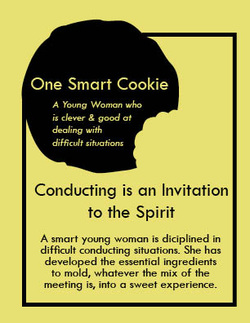


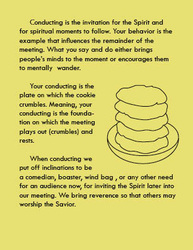

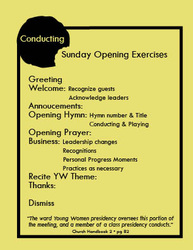
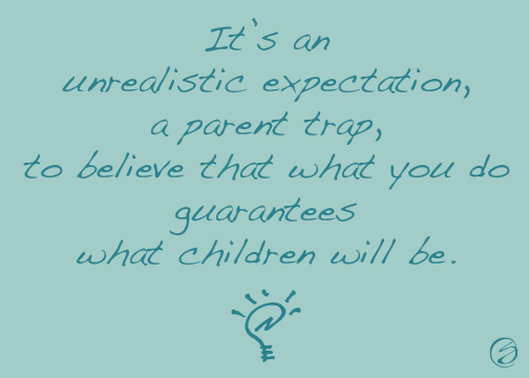

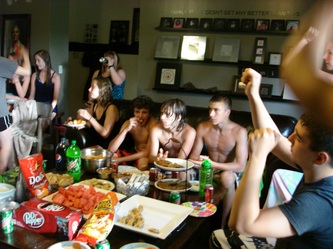
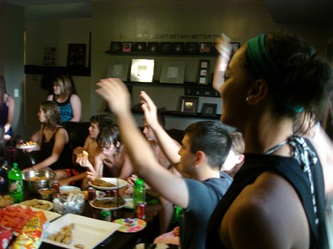
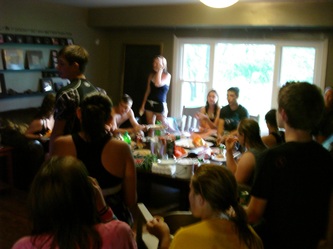

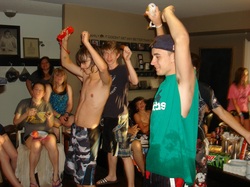



 RSS Feed
RSS Feed